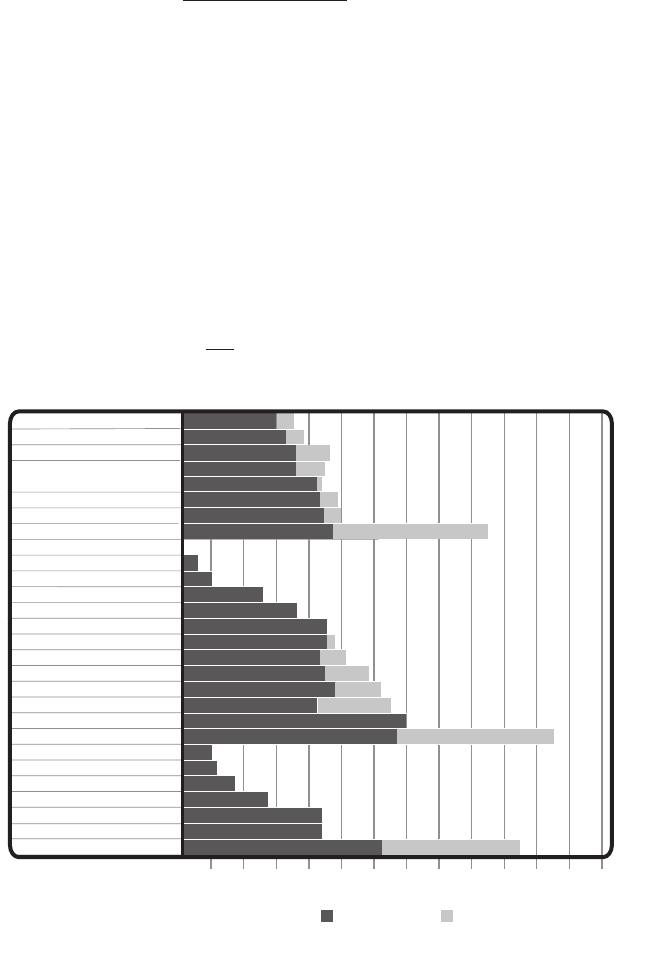
23- ENG
D28469
3. The running wattage of examples 1 & 2 totals 1150 watts. The starting
wattage of the small refrigerator is 2000 watts which is 1500 watts more
than the running watts. Take this difference of 1500 starting watts from the
refrigerator and add to the total running watts of 1150.
Example 3: 1500 Starting Watts
1150 Running W
atts
TOTAL =2650 Total Watts
Generator must have a maximum capacity of at least 2650 watts.
STARTING WATTAGE REQUIREMENTS
1. Some appliances and tools will list on the motor nameplate the starting
and running voltage and amperage requirements. Use the following
formula to convert voltage and amperage to wattage:
Volts X Amp = Watts
Example: 120 volts x 10 amps = 1200 watts
2. To determine the approximate starting wattage requirement for most
appliances and tools with inductive type motors, multiply the wattage that
was calculated by 2 to 4 times to assure adequate generator capacity. If
the nameplate information is not available use the values on the following
chart as a guide.
3. Remember that the starting and running wattage for resistive loads are the
same. (Example: a 100 watt light bulb requires only 100 watts to start.)
Most resistive loads will
be listed in wattage.
The wattage ratings
shown are averages -
actual wattage may vary.
WATTAGE Run Start
To select the right generator for
your needs, total the wattage of the
items to be run at the same time.
3/8” Hand Drill
Jigsaw
(1/3 HP) Airless Sprayer
6” Bench Grinder
Belt Sander
Demolition Hammer
7-1/4” Circular Saw
(Small) Air Compressor
Light Bulb
Home Security
Television
Microwave
Toaster Oven
(5,000 BTU) Portable Heater
Furnace Fan
Refrigerator/Freezer
Sump Pump
Clothes Washer
Water Heater
(30,000 BTU) Air Conditioner
(12V DC) Battery Charger
Radio
Slow Cooker
Electric Blanket
Electric Skillet
Coffee Maker
Small Refrigerator
100
250
500
1000
2000
3000
4000
5000
6000
7000
8000
9000
10000
Application Guide


















